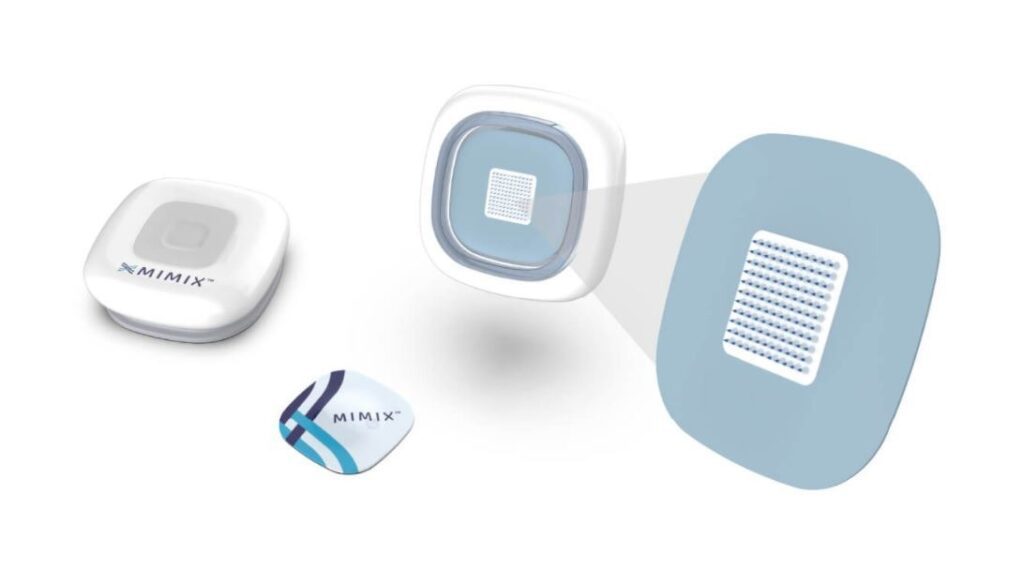
In the vaccine delivery industry, the need for disruption is clear.
Today, more than 1.5 million people globally die each year from diseases for which there is a safe and effective vaccine. When you look at why many people remain unvaccinated, three of the main causes are that vaccines are inaccessible, people have needle phobia, or people are too busy to prioritize a trip to a clinic to receive a vaccine.
Let’s take a closer look at how vaccine patches can solve each of these three challenges associated with vaccination rates, as well as why vaccine patches have the potential to improve vaccine efficacy compared to an injection via needle and syringe.
Overcoming supply chain and administration resources
Today, distributing and administering vaccines requires extraordinary supply chain resources, since many vaccines need to be temperature-controlled while being shipped and stored.
Vaccine patches, on the other hand, can be stable at room temperature, eliminating the need for cold chain infrastructure. Vaccine patches are also more stable and durable than vaccines in liquid form. This stability can facilitate international distribution, particularly in regions with limited infrastructure or resources.
Also, once a vaccine arrives at its intended location, you need trained individuals to administer the vaccine via needle and syringe. Due to its simplified administration and temperature-stable properties, a vaccine patch eliminates the need for healthcare professionals or specialized facilities for vaccination.
Alleviating needle phobia
An estimated 25% of adults fear needles. This fear contributes to vaccine hesitancy. In fact, an estimated 16% of adults do not get a vaccine because of their needle phobia.
Vaccine patches are designed for simple and painless application, making them more favorable for use in populations that are hesitant or fearful of injections and needles. This can lead to increased vaccine acceptance and coverage for populations such as children and individuals with needle phobias.
Increasing vaccination rates with at-home delivery
The COVID-19 pandemic rapidly accelerated the adoption of home-based care. At the beginning of the pandemic, people had to visit a clinic to receive a COVID test. Now, people in the U.S. and around the world use an at-home rapid test to see if they have the virus. These tests are often shipped directly to their door from their healthcare provider, pharmacy, or an e-commerce site like Amazon or Target.
Much like I’ve seen COVID-19 tests come out of the clinic and into people’s homes, I expect vaccines will do the same in the coming years.
Many American adults do not receive their flu shot each year due to inconvenience and access barriers. For some individuals, it can be challenging to schedule a vaccination appointment or find access to healthcare providers or vaccination clinics. This can be particularly problematic for individuals with limited mobility or those living in rural areas.
Vaccine patches that are designed to be self-administered will be shipped directly to an individual’s door. A vaccine patch that can be self-applied right in the comfort of a person’s own home eliminates time and travel barriers, making getting vaccinated a more efficient experience.
Increasing vaccine efficacy
Vaccines injected into non-barrier tissue are typically cleared from the body in less than two days. This is not enough time for immune cells to mount an optimal, broad humoral or T-cell response, similar to what occurs through sustained, natural exposure to infection.
When looking at how a particular microarray vaccine patch is made, one key question to ask is whether the microarray is coated or soluble. For coated microarrays, the hundreds or thousands of tips on the microarray patch are made of a solid material, and the vaccine or therapeutic is then “coated” over the patch. For soluble microarrays, the tips on the microarray are filled with the vaccine or therapeutic in question. When applied to the skin, the vaccine or therapeutic dissolves into the skin.
One significant advantage of a soluble microarray is that the tips gradually dissolve into the body after the patch is removed, releasing their payload of vaccines over time. This extended therapeutic presentation mimics how natural infections interact with the body. By allowing the immune system time to mount a stronger, more durable response, soluble microarrays have the potential to provide unprecedented protection against diseases. The dissolving needles also eliminate any sharps hazard, allowing for simple disposal of the patch after administration.
The days of vaccines being associated with making appointments, traveling to clinics, and receiving uncomfortable shots will soon come to an end. After decades of development, microarray patches (MAPs) are on the cusp of fundamentally changing how millions of people around the world receive vaccines for a variety of illnesses—from flu to COVID. As detailed in a 2023 Korea Biomedical Review article, multiple companies are conducting vaccine patch human trials. Later this decade, I anticipate we’ll see the first publicly available vaccine patches around the world.
Michael Schrader is CEO and co-founder of Vaxess, a life sciences company developing a shelf-stable vaccine patch with potential for self-application. Michael received his B.S. in Mechanical Engineering from Purdue University and his M.B.A. from Harvard.




